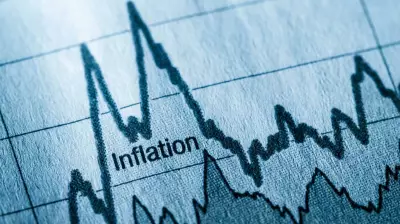
In a significant development that could affect economic policies worldwide, United States Federal Reserve Governor Lisa Cook has delivered a sobering assessment of the inflation landscape, indicating that price pressures are likely to remain elevated throughout 2024.
The warning comes as central bankers globally continue their battle against stubborn inflation that has proven more persistent than many economists initially projected. Cook's remarks suggest that the road to the Fed's 2% inflation target may be longer and more challenging than anticipated.
Persistent Price Pressures
According to Governor Cook, recent economic data shows that inflation is not cooling as quickly as hoped. "We are seeing sustained price pressures across multiple sectors," she noted during her recent address. This persistence suggests that the Federal Reserve may need to maintain its current restrictive monetary policy stance for longer than financial markets have been expecting.
The implications of prolonged high inflation in the United States extend far beyond its borders. For countries like Nigeria that maintain significant economic ties with the US, sustained American inflation could mean continued pressure on import costs and potential ripple effects on local price levels.
Global Economic Implications
Cook's assessment carries particular weight for emerging markets and developing economies. Higher-for-longer US interest rates typically strengthen the US dollar, making dollar-denominated imports more expensive for countries using other currencies. This dynamic could complicate inflation management efforts in nations already grappling with their own price stability challenges.
The Federal Reserve official emphasized that while progress has been made in taming the worst of the post-pandemic inflation surge, the "last mile" of returning to target may prove the most difficult. Service sector inflation and housing costs remain particularly stubborn, requiring continued vigilance from policymakers.
What This Means for Monetary Policy
Cook's comments suggest that the Federal Reserve is unlikely to rush into interest rate cuts despite mounting pressure from various market participants. The central bank appears committed to maintaining its data-dependent approach, waiting for clear and sustained evidence that inflation is convincingly moving toward their 2% objective.
This cautious stance reflects lessons learned from previous inflationary episodes where premature policy easing led to resurgent price pressures. The Fed seems determined to avoid repeating those mistakes, even if it means keeping borrowing costs higher for longer.
As global economic watchers digest these developments, the focus now shifts to upcoming inflation data and how it might influence the Federal Reserve's next moves. For businesses and consumers alike, the message is clear: the era of elevated inflation isn't ending as quickly as many had hoped.





